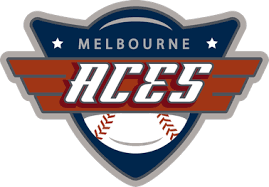Frozen shoulder, also known as adhesive capsulitis, is a condition characterised by stiffness and pain in your shoulder joint.
Signs and symptoms are things such as painful movement and progressive stiffness. These typically begin gradually and worsen over time. They then resolve, usually within one to three years.
Frozen shoulder occurs when this capsule thickens and tightens around the shoulder joint, restricting its movement.
Doctors aren’t sure why this happens to some people, although it’s more likely to occur in people who have diabetes or those who recently had to immobilise their shoulder for a long period, such as after surgery.
It’s unusual for frozen shoulder to recur in the same shoulder, but some people can develop it in the opposite shoulder.

Treatment
Treatment for frozen shoulder involves range-of-motion exercises best performed after corticosteroids and numbing medications are injected into the joint capsule in a procedure called a hydodilitation.
In a small percentage of cases, arthroscopic surgery may be indicated to loosen the joint capsule so that it can move more freely.
The shoulder is actually composed of more than a single joint. It is better understood as a ‘complex’, composed of a number of different structures.
- The shoulder blade (scapula).
- The collar bone (clavicle).
- The arm bone (humerus).
- The joints that link each of these structures together.
In order to reach with your arm, particularly above shoulder height, each of the joints that contribute to the shoulder ‘complex’ must work as a team. Soft tissues (muscles, tendons, ligaments) have a large role to play in facilitating this ‘teamwork’. Where there is a deficit in any of these tissues, pain and movement limitation can result.
Conservative Treatment
Following an acute or chronic injury to the shoulder, rest and occasionally immobilisation is required. Following this a progressive gentle range of motion and strengthening program can commence to help resolve the dysfunction.
Exercises will be based upon re-educating the muscles of the neck, shoulder and thorax so they work in unison to provide the necessary control to guide the shoulder through the activity.
Strengthening and proprioception exercises are important to assist the shoulder to function and reduce the risk of re-injury.
Postural advice is often included as this can be a major factor in the shoulder dysfunction. In a world where we sit and work with technology, bad habits too often lead to injuries. Occasionally shoulder and arm pain can originate from the neck or upper back. The therapist will be able to assess and treat this should it be contributing to the problem.
Alternative therapies such as remedial massage can help to relieve the tensions of the shoulder, neck and back that may be contributing to pain and discomfort. Headaches and loss of sleep are common side effects to shoulder dysfunction due to stresses on other parts of the body because of the shoulder.
Shoulder injuries generally take a long time to get better, especially if there is a tendon injury. Your clinician will guide you through a time line, but be patient as it can take 6 months or more.
Surgical Treatment
Occasionally tissues have a poor healing capacity, and surgery may be required to reduce pain, restore movement and enable a return to home, work and leisure activities.
In some circumstances, the capsule simply needs to be trimmed or ‘tidied up’. This is to help reduce the irritation and improve comfort. This will allow for normal activities and range to resume
Shoulder surgery is generally performed arthroscopically (via a small camera and tools)
Generally when you have a release or clean up surgery, you are allowed to move your shoulder as you feel comfortable over the ensuing weeks form your operation.
You will the commence a progressive range of movement and strengthening program much like you would do with a conservative program. Recovery from shoulder surgery can take 6 to 12 months depending upon the procedure performed.
Glenferrie Sports and Spinal Clinic is located in Hawthorn. Situated conveniently near public transport and with convenient parking it is central to Camberwell, Kew, Richmond, Toorak and Malvern.
For appointments call 03 9815 2555, or book online here














